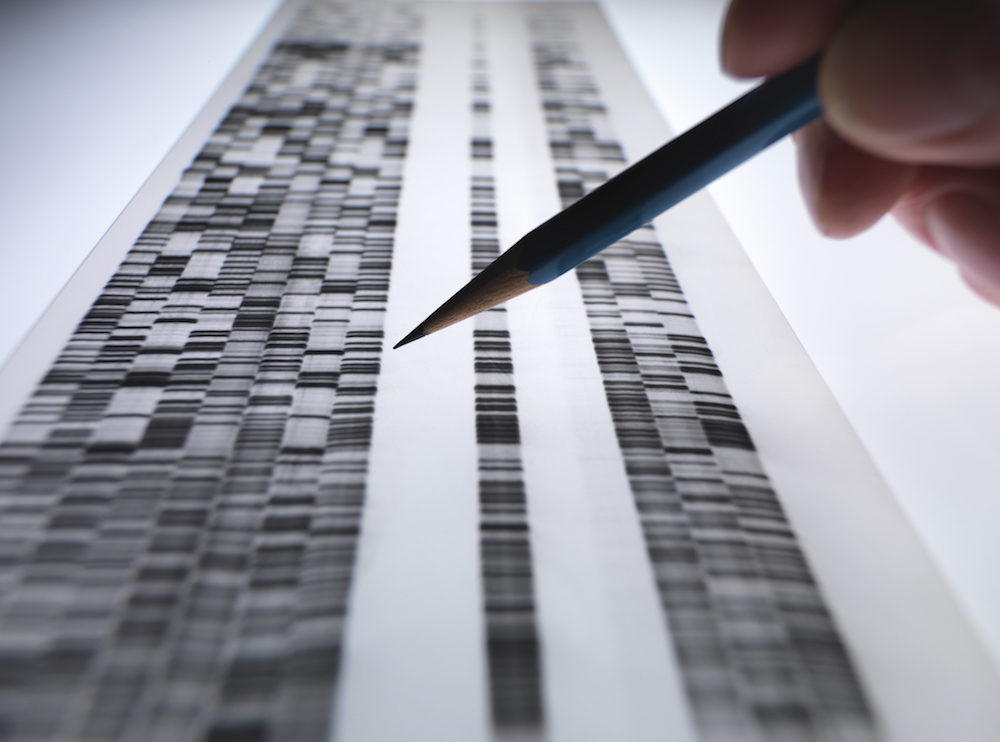Mapping Human and Neanderthal Genomes
Back in 1990, researchers embarked on an epic project to map out all of human DNA: the Human Genome Project. Their first draft of the human genome was published 20 years ago today.
I find myself thinking: Wow, it’s been 20 whole years—yet it’s only been 20 years!
Genetics is a dizzyingly complex field that is still in its infancy. Because of that, new finds and advances have a lot of potential for misinterpretation and misuse. But the field has also served as a potent reminder of how similar we all are at the core—and how blended humanity has been throughout all of deep time.
Humans have more than 3 billion letter pairs of DNA in their genome: It turns out that less than 2 percent of that spells out around 20,000 specific genes, or sets of instructions that code for the proteins that make our tissues. All humans share the same basic set of genes (we all have a gene for earwax consistency, for example), but there are subtle variations in the DNA spelling of those genes from individual to individual that result in slightly different proteins (sticky versus dry earwax). The Human Genome Project mapped out both our genes and the DNA in between, and set out to see how these tiny variations in DNA are linked to variations in physical traits and disease. Overall, any given human being is about 99.9 percent similar, genetically, to any other human being.
All that is just for modern Homo sapiens, of course. As a researcher focused on human evolution and the lives of long-extinct hominin populations, the Human Genome Project was just the beginning of avenues of research that I find incredibly exciting.
The Neanderthal Genome Project began in July of 2006, and in May of 2010—just over a decade ago—researchers published the initial draft of the genome of one of our closest extinct relatives. Our genome overlaps with about 97–98 percent of that of Neanderthals, thanks to us sharing a common ancestor. (Many living things are surprisingly similar: Humans and chimps, for example, are only about 1.2–6 percent different from each other, depending on how you count.)
Human groups lived, moved, and mingled, and some traces of that world are left to us to tease out of our genome.
Thanks to this work, we now know details about Neanderthals that the archaeological record alone could never have provided. For example, fragments of DNA from specimens found in Spain and Italy showed that at least some Neanderthals likely had pale skin and reddish hair—although, interestingly, the variations for this coloring are different from the variants found in modern humans. Apparently, redheads among Homo sapiens evolved separately.
I am particularly interested in how Neanderthals and other early hominin populations used the plant and animal resources around them for food, tools, and other daily needs. DNA can provide clues in those arenas. For example, Neanderthals, like us, possessed a gene with the catchy name TAS2R38 that controls the ability to taste bitter substances. Chances are this adaptation evolved in the human lineage to enable us to avoid foods that contain toxins, which often have a bitter taste.
In 2016, researchers examined a gene in both modern humans and Neanderthals that controls the body’s response to carcinogenic hydrocarbons. They found that Neanderthals were up to 1,000 percent more sensitive to these carcinogens than humans but had more genetic variants that better neutralized the harmful effects. Maybe this was an adaptation that occurred as the result of early fire use as our hominin ancestors started to inhale carcinogenic smoke. That is still unclear.
Often, genetic data raises more questions than it answers.
The most interesting upshot of the Human and Neanderthal Genome projects might be the discovery that Neanderthals made some contributions to the existing human genome—in other words, Neanderthals and Homo sapiens occasionally interbred.
The full picture of the interactions between Homo sapiens and Neanderthal populations during the period when these groups overlapped in Europe and East Asia is still murky. (To make matters even more complicated, it seems that Neanderthals and Homo sapiens also interbred with Denisovans, another distinct human group.) Most humans today have less than 4 percent Neanderthal DNA.
We have been the only human species populating the planet for tens of thousands of years, so it can be difficult to picture a time when multiple different types of humans shared habitats. It is easy to think of the deep past as a series of stills: brief snapshots of lives long past, like the frozen scenes of museum dioramas. But the ancient world was a dynamic place. Human groups lived, moved, and mingled, and some traces of that world are left to us to tease out of our genome.
Several companies now offer to sequence bits of a person’s DNA to help shed light on their ancestry, physical traits, or disease susceptibility. This information is interesting, but it also can be misinterpreted to imply that racial categories established in the earliest days of anthropology and taxonomy are rooted in our biology (they aren’t), or that traits like strength, speed, or intelligence are genetically predetermined (they aren’t). We humans seem to be wired to prefer simple categorizations to make sense of our own identities, but this is at odds with the reality of genetic variation, environmental effects, and the effects of evolution—all of which are complex and tangled together.
Many home DNA tests have begun to include in their ancestry reports the percentage of DNA that a person has likely inherited from ancient hominins. This information may be interesting, but it really has no bearing on an individual’s health, and certainly does not indicate how “advanced” a person is.
As we learn more about our complicated human past, it is incredibly important to be aware of the limitations, as well as the potential, of the information contained in our genes.


































